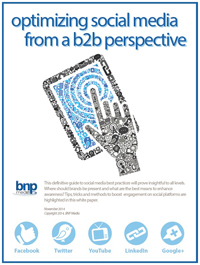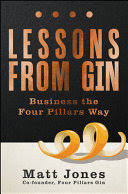A View From the Top
A View From the Top
By SARAH THEODORE
InBev Chief Executive Officer John Brock had been in
the beer business a mere six months when he was handed the idea for a
business combination with Brazil’s Companhia de Bebidas das Americas
(AmBev), a move that would catapult the Belgium-based company to the top of
the beer industry and make it the largest brewer in the world by volume.
The combination of what was then known as Interbrew with the Latin American
company now comprises more than 200 brands, including Stella Artois,
Beck’s and Brahma, as well as numerous local and regional brands.
Although the move was a baptism by fire of sorts into
the beer industry, Brock is no stranger to beverages, having spent nearly
25 years in the industry, first with Procter & Gamble and then with
Cadbury Schweppes, before joining Interbrew. In 2003, he left his post in
London as Chief Operating Officer at Cadbury to lead the brewer in Leuven,
Belgium. The company already had been on a worldwide buying spree prior to
the merger with AmBev, and today is a truly global concern, with operations
in every region of the world. Its volume of nearly 205 million hectoliters
per year represents about 14 percent of the world beer market, and it holds
the No. 1 or No. 2 positions in more than 20 markets around the world.
While it has only existed as a corporate entity since
1987, and as a public company since 2000, InBev also carries with it a rich
history. In Leuven, the company can trace its brewing roots back to 1366,
and in many parts of the world its brands have similarly deep ties. For a
time, the company referred to itself as “the world’s local
brewer,” but recent efforts have focused on creating a global
presence for its three flagship brands — Stella Artois, Beck’s
and Brahma — as well as maintaining the popularity of its local
brands.
“The company has an incredible heritage, dating
all the way from Stella Artois,” Brock says. “When you think of
the Belgian heritage, the German heritage that comes with Beck’s, the
Brazilian heritage that comes through Brahma, as well as all the local
brands we have around the world, it’s got an unbelievably rich
heritage. I think it’s something that helps define the culture and
character of the company.”
Think globally, act locally
A key element to InBev’s success is its ability
to do business in local markets while coordinating its efforts on a global
scale. The company has operations in both well-established beer markets,
such as North America and Western Europe, and developing markets, such as
Asia Pacific, Central and Eastern Europe, and Central and South America,
which gives it a balance of stability and growth opportunity.
“We believe we offer the best combination of
developing and developed markets of any brewer in the world,” Brock
says. “The developing markets, of course, are growing measurably
faster than the developed markets, but they bring with them a degree of
unpredictability and uncertainty that the developed markets don’t.
It’s an inherent risk in doing business in those countries.
“The developed markets, on the other hand,
aren’t growing as fast. But they are very predictable, the currency
is stable, the economies are stable and the political situations are
stable.”
He estimates the company has about 60 percent of its
business in developing markets and 40 percent in more developed markets. To
handle the needs of such a broad range of markets, the company is divided
into five zones: North America, Central and South America, Western Europe,
Central and Eastern Europe and Asia Pacific. Reflecting the international
aspects of the business, the company’s senior management team (EBM
– Executive Board of Management) is made up of executives from
Brazil, Belgium, the United States, the United Kingdom, The Netherlands and
Germany.
“Take a look at the make-up of our senior team
and compare it to any other brewer in the world,” Brock says.
“See if you can find anyone else who has anything like the
geographical spread that we have.”
Many functions, including marketing, are coordinated
from Belgium but adapted to reflect different markets throughout the world.
Because legal drinking ages and advertising standards differ from one
country to the next, InBev allows for differences between markets, but
maintains a strategy for the company as a whole.
“We are very committed to responsible marketing
of our products, not marketing to underage consumers, making sure we have
an appropriate positioning and marketing strategy,” Brock says.
“We have a code of conduct for marketing, which we take very
seriously. We think we’re on the forefront of brewing companies, and
companies in general, in taking that kind of approach.”
InBev’s brand strategy is also divided between
global and local interests. Eighty percent of its volume comes from local
and regional brands such as Skol in Brazil, Jupiler in Belgium and
Tennent’s in the United Kingdom, as well as Rolling Rock in the
United States and Labatt Blue in Canada. In their respective countries,
these brands command strong consumer loyalty. Skol, for example, is the
third-largest beer in the world after Budweiser and Bud Light, and it is
only sold in one country.
“If you go around the world, you’ll see
local brands that are critically important to our business, and in fact,
are the mainstay of our business,” Brock says.
But it’s the three flagship brands most people
will be familiar with. Stella Artois, Beck’s and Brahma are
positioned as premium products around the world and complement the local
brands in many areas.
“Those brands have higher profit margins,”
Brock says. “They are clearly premium positioned and premium priced.
They are layered on top in most markets of the world, and provide
additional profit margin for us.
“When we talk about having the best brand
portfolio in the world, our view is if we have the right brands and if
they’re positioned properly and if they’re marketed and priced
properly, they’ll grow faster than the industry.”
From biggest to best
Above-industry growth is one of InBev’s goals,
and part of what Brock calls moving “from biggest to best.” In
addition to the sizeable increase from last year’s merger, the
company achieved 3.3 percent organic growth in 2004, and it has stated its
intention to have the highest profit margin in the industry, 30 percent vs.
today’s 25 percent, by 2007.
The company has enacted several changes in an effort
to improve efficiency, including outsourcing business functions such as
information technology and consolidating media buying and advertising
agencies.
“Unless something is a core competency and is
absolutely essential for us to do better than anybody else to be
successful, we’re going to take a look at whether it’s
something we should outsource to somebody who can do it better than we
can,” Brock says.
It also has closed several breweries and moved
production to other areas, and Brock says it will continue to tweak
production efficiencies. “I’ve gone on record a number of times
and said we have too many breweries. That’s a simple fact,” he
says. “It’s not a simple thing to solve, because we recognize
there are all kinds of issues and implications. But we have more than 100
breweries around the world. Some of our competitors get by with many fewer
than that.”
Moving production of a product can be tricky if brand
identity is tied to a brewing location. Brock says the company carefully
examines the implications of moving a brand on consumer perceptions of the
product.
“If you look around the world, clearly there are
some breweries that are tied to the brands that are produced in them. There
is no way we would ever close a brewery that has to do with the brand
unless we’d figured out a way to manage the consumer impact of doing
that.”
The company also will continue to look at targeted
mergers and acquisitions, though probably not on the level of the AmBev
deal. In countries such as China, Russia and Germany, as well as parts of
Latin America, the company says it would like to increase its market share.
“Being the largest brewer in the world is an
exciting, nice-to-talk-about kind of thing, but it’s not hugely
important in terms of being the best brewer in the world,” Brock
says. “Being successful is a lot more about the kind of power you
have in a given market as opposed to simply adding up all the bits and
pieces around the world.”
For example, he points out that InBev is the
third-largest brewer in China. It is a leading brewer in the southern
— most affluent — provinces in which it does business, however,
and increasing its stake in these Chinese provinces will be a goal going forward. Similarly, the company is the No. 2
brewer in both Germany and Russia, but would like to boost its share in
those countries.
InBev in the U.S.A.
In the United States, InBev’s largest business
is the import beer market where it has brands such as Stella Artois,
Beck’s, Bass, and more recently Brahma.
“The brands that are going to provide the bulk
of our growth in North America are the four global brands,” Brock
says. “Stella Artois is the fastest-growing imported brand in the
United States today. It’s on fire. It’s a premium brand with
huge potential.”
In the United States, the brand got its start in New
York City, and is now in every major market. It saw sales increases of 40
percent last year, and continues to gain momentum in established markets as
well as new distribution areas.
Brock describes Beck’s as “the
quintessential German brand,” and says it also has increased sales
and reestablished relevance with consumers, thanks in part to the new “Life Beckons” campaign. Bass, he says,
has had a more difficult time gaining traction
because of some past distribution missteps and because it is an ale, which
“tends to be polarizing” in a lager-driven market. However, he
says, the brand does well on-premise, with half of its volume in bars and
pubs.
Last September, the company combined Labatt USA and
Beck’s North America to form InBev USA, and said it planned to triple
its investment in Stella Artois this year, increase spending behind
Beck’s by more than 50 percent over the next three years, and
continue to invest in Bass.
“We believe the import category should be able
to grow pretty consistently at 4 percent a year, and we think we can grow
those four brands significantly faster than the category,” Brock
says. “We’re optimistic about the United States. It is the
world’s largest premium market. We have to be successful in the
United States, and we think we have the right brands as well as the right
team to make that happen.”
In addition to growing more than the 4 percent average
in the United States, InBev has set its sights on annual global volume
growth that is two to three times the industry average. Brock says the goal
is just as important, if not more important, than headline-making mergers.
“Above-category volume growth is the holy grail
in our business,” he says. “Acquisitions are important, but I
think you’ll find any company that has used an acquisition approach
as a surrogate for volume growth loses because investors will recognize
that you’re not creating value. Any company that spends all of its
efforts on cost reduction and goes about what I would say is
‘shrinking to greatness’ doesn’t work. If you want to be
a truly enduring, great company, you must generate above-industry volume
growth and become the most efficient brewer at the same time. That’s
what we plan to do.
“We’ve got a high-powered,
high-performance team and I think the organization is beginning to feel
what it means to be the best,” he continues. “That’s kind
of pervasive, and I think you’re going to
see some really exciting things coming out of our company.” BI
The spirit of Brazil
When Belgium’s Interbrew and Brazil’s AmBev
joined forces last year, they created a brewing company that reaches into
some of the most potentially lucrative markets in the world. Interbrew
already was well-established in Europe and had operations in North America
and Asia, while AmBev was the fifth-largest brewer in the world, with
approximately 67 percent of the Brazilian market and operations throughout
Latin America. Interestingly, while both companies were public, they also
were family controlled, and it was through those relationships that the
idea for a deal emerged.
“The way the concept of the combination came
about was the families getting to know each other over an extended period
of time,” says InBev Chief Executive Officer John Brock. “The
companies compete in geographies that are broadly different and would bring
characteristics into a combined company that are formidable.”
The merger took about six months to pull together, and
by the time the deal was closed in August of last year, the companies had
determined their management structure and how to incorporate best practices
from each group.
“We’re continuing to learn, grow and get to
know each other better, but given the magnitude of the combination, the
difference in the management structure we put in place and just the amount
of change people are having to deal with around the globe, I’m really
pleased with what I see,” Brock says.
Since the business combination, AmBev’s Brahma
beer brand has hit the global market as one of InBev’s flagship
products. The product is described as having a unique flavor that is clean
and crisp, with papaya afternotes. The launch includes more than 15
countries, and a new curved bottle for the product.
“Brahma is absolutely everything good about
Brazil,” Brock says. “It’s the embodiment of the
Brazilian way of life. The particular word Brazilians use to describe it is
‘ginga,’ which is basically the way they tackle everyday life.
It’s all about effortless flair.”
AmBev also brings the Skol and Antarctica brands to the
table, and is a Pepsi-Cola soft drink bottler in Brazil and other Latin
American countries, and owns Guarana Antarctica, the second-largest soft
drink in the country.
Looking for a reprint of this article?
From high-res PDFs to custom plaques, order your copy today!






